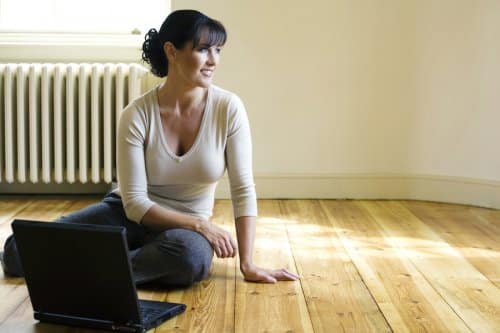
Hardwood Floors – Long-Lasting, Warm, And Elegant
Many homes throughout North America have hardwood floors installed in them because of the classy, warm, and elegant look they offer. If you regularly maintain your hardwood floors, you can get over a quarter of a century of life out of them. Even some homes from the early 1900s have hardwood floors in them that can be refinished to look nearly brand new again. The two types of hardwood floors are solid hardwood and engineered hardwood. Each of these hardwood types is still designed with real wood, but they are just manufactured a bit differently.
Solid Hardwood
Solid hardwood is manufactured from solid lumber and it’ll look good if you install it in pretty much any room of a home. The thickness of solid hardwood ranges from 18 – 20 mm and they have a tongue that fits into a groove for installation. Solid hardwood can be manufactured with different types of wood, and some wood floors might feel more solid and hard in comparison to other ones because of the wood that’s used. If you go with wood that’s very solid, then the wood will be less prone to knicks, dents, and scratches. If you purchase a very old home that has hardwood floors in it, the floors can be refinished to bring it back to its original state. This can be done numerous times.
If you’re living in an area where the environment is very moist, solid hardwood tends to swell a bit. If it’s a dry environment, then the hardwood will contract. Sometimes the fluctuations in the climate can create differences in the appearance of the floor. It’s recommended not to install solid hardwood flooring in basements or bathrooms because of the risk of damage from moisture.
Installing solid hardwood flooring isn’t a quick and easy process. The installer must exercise a great deal of caution when installing these expensive floors. Some of the different types of solid hardwood floors you can purchase are:
- Maple
- Pecan
- Beech
- Cherry
- Oak
- Pine
- Birch
- Walnut
- Hickory
Wherever you go, you’ll see solid hardwood floors installed throughout homes. They provide natural aesthetic appeal to a home, can increase the home’s value, and are known to be very durable over time.
Engineered Hardwood
With engineered hardwood, you’re still getting a hardwood surface, but the layers underneath the hardwood surface are either plywood or fireboard. The multiple laminated layers underneath the hardwood make it a very durable and strong product that has a higher resistance to moisture than solid hardwood. Because of that, it can be installed in basements or even bathrooms. You can also refinish engineered hardwood floors if they’re starting to look outdated after a while.
The stability and durability of engineered hardwood flooring make it better for homes that are subject to environmental fluctuations. If the humidity is constantly lowering and rising, it won’t affect engineered hardwood as much as solid hardwood. Engineered hardwood looks more visually pleasing than laminate flooring and is much cheaper than solid hardwood. You can also purchase engineered hardwood in many different designs and colors so that it’ll match the overall design of your home.
For those that want hardwood flooring that will increase the value of your home and doesn’t require too much maintenance, both solid and engineered hardwood are great options.


